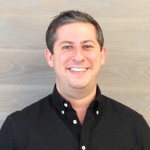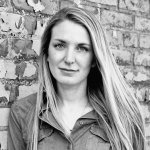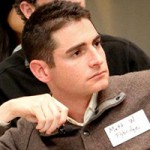260SmithWatt 70Neumann 50F.Abed , AI20s.com Fei-Fei Li, Zbee
HumansAI.com NormanMacrae.net AIGames.solar EconomistDiary.com Abedmooc.com
Replies to This Discussion
-
http://hardwareworkshop.com/hardware-workshop-new-york-2014/
Hardware Workshop – New York – 2014

I’m excited to announce that Hardware Workshop is coming back to New York on October 24th and 25th.
Hardware workshop is a two day event for hardware startups. Taught by experienced operators, it’s purpose is simple: Teach important lessons to the next generation of hardware entrepreneurs.
What makes this workshop unique is the quality of the content, the deep operational experience of the teachers, and the long term connections you will make. Hand curated, each teacher covers a unique topic that falls within the startup’s life cycle from an idea to reaching market fit.
WHEN?
Friday, October 24th – Saturday, October 25th.- Doors open at 9:00am
- Sessions run every hour (10am – 1pm, Lunch, 2pm-5pm).
- Followed by Happy Hour
WHERE?
R/GA – 353 W 39th St, New YorkCOST?
$99This includes two breakfasts, two lunches, beverages, and happy hour.
Being entrepreneurs we are sensitive to charging for events, but we found a minimum amount enables us to make the events better (good food, audio/video equipment, location, organizer help, etc), while ensuring you are committed to the event.
HOW DO I BUY A TICKET?
First you have to apply. We only have 75 open spots. We are looking for startup teams who are working on a hardware product and who really want to attend. We aren’t judging what people are building, just verifying people are actually building hardware. Otherwise the lessons we’re teaching can’t be applied. If your application is accepted you will get an email to purchase a spot.WHAT WILL I LEARN?
Lots. We will have 12 different 60 minute sections, taught be experienced operators. The topics are the following:- Building Real Press Relationships
- How To Fund A HW Startup
- Defining your brand
- Refining to an MVP
- Picking A Supplier
- Creating True Fans
- Hardware By The Numbers
- Crowdfunding Success
- IP On A Startup Budget
- Prototyping, prototyping, prototyping.
WHO IS TEACHING?
 Marc Barros – Moment
Marc Barros – Moment
Marc Barros is the co-founder of Moment, amazing lenses for your mobile phone, which recently raised $450K on Kickstarter. Prior to Moment, Marc was a co-founder and former CEO of Contour, a hands-free camera company that makes action video easy to capture and share. Shortly after graduating from the University of Washington, Marc co-founded Contour in 2004 and led the organization from a garage to a multi-million dollar company with hundreds of thousands of customers around the world. @marcbarros Ben Einstein – Bolt
Ben Einstein – Bolt
Ben Einstein is an experienced product designer and investor. Ben is currently the Managing Director of Bolt, an early-stage seed fund focused exclusively on hardware startups. In addition to seed capital, Bolt invests full-time staff, shop equipment, and extensive expertise with manufacturing and commercialization. Prior to starting Bolt, Ben ran Brainstream Design, a product design and development consultancy in Massachusetts. Ben has been directly responsible for bringing a long list of products to market covering diverse sectors including consumer electronics, high-performance audio, sporting goods and green energy. Jesse Derris – Derris & Company
Jesse Derris – Derris & Company
Jesse Derris is the Founder and CEO of Derris & Company, a brand strategy and public relations firm headquartered in New York, NY. Before founding the firm, he served as Senior Vice President and Partner at Sunshine Sachs, where he led the firm’s work in a variety of verticals, including finance, crisis, digital, sports and real estate. Derris serves as a crisis counselor for major corporations and executives in media, finance, fashion, entertainment and sports, and invests in and advises consumer-facing start-ups at various stages of development. He is also an advisor-in-residence for the Columbia University Entrepreneurship Program. Christina Mercando – Ringly
Christina Mercando – Ringly
Christina Mercando is the founder and CEO of Ringly, a New York City-based fashion/technology company composed of designers and engineers dedicated to blending art and technology in meaningful ways. Prior to founding Ringly, Christina was the VP of Product at Hunch, a social recommendation service aiming to build a ‘taste graph’ of the entire web by intelligently connecting people to the things they love. Hunch was acquired by eBay in 2011 where Christina played a major role in improving the social shopping and merchandising experience across ebay.com. Matt Witheiler – Flybridge Capital
Matt Witheiler – Flybridge Capital
Matt is a General Partner at Flybridge whose investment interests and experience broadly cover companies across the information technology sector including hardware, financial technology and education technology. He represents Flybridge on the boards of Convoke Systems and Dragon Innovation and serves as an observer at Carnival Labs and DataXu. Prior to joining the firm Matt spent 7.5 years in the hardware space, first helping to start and run AnandTech.com and later serving in product roles at ATI Technologies. Matt holds a BA in Public Policy Studies from Duke University and an MBA from the Harvard Business School. Jake Levine – Electric Objects
Jake Levine – Electric Objects
Jake Levine is the Founder and CEO of Electric Objects, a new hardware company based in New York building a framed, wall-mounted, high definition screen with integrated computer for the home, made to display artwork from the Internet. Scott Miller – Dragon Innovation
Scott Miller – Dragon Innovation
Scott is the CEO of Dragon Innovation, a company whose mission is to help hardware entrepreneurs succeed in every phase of the journey from a crowdfunding to manufacturing at scale. Prior to founding Dragon, Scott spent 10 years at iRobot and was responsible for setting up and leading the team that manufactured Roomba, Scooba, Looj and ConnectR. Scott is also a General Partner at Bolt, and has served as an Adjunct Professor of Mechanical Engineering at Olin College and taught the Mechanical Design and the Design for Manufacture courses. Jeff Mancini – Advisor
Jeff Mancini – Advisor
Jeff is an seasoned marketer and entrepreneur who’s serviced brands from early stage to Fortune 100 status. Some of his clients have included Nike, AT&T, GE, Samsung, Google, Philips, 3M, Bosch and J&J. With a diverse background including business strategy, brand development, and product innovation, he helps clients break through in a cluttered technology marketplace. He ran his own agency for 5 years and helped shape the innovation practices at both Interbrand and R/GA, two of the most regarded creative agencies in the world. Amanda Peyton – Etsy
Amanda Peyton – Etsy
Amanda Peyton is the co-founder of Grand St., a new marketplace for creative technology. Grand St. features independent and design-oriented products from creators all over the world and shares them with a rapidly-growing global audience and was acquired by Etsy in 2014. Peyton is a technologist at heart and has worked at the intersection of technology and design for her entire career. She is an alum of MIT Sloan, Northwestern and Y Combinator and currently lives in New York City. Richard Ganas – Quirky
Richard Ganas – Quirky
I grew up in Detroit, and studied at industrial design at Wayne State University . Before Quirky, I worked for a commercial construction company, and helped manage the Wayne States wood shop. I started at Quirky in 2011 as a industrial designer and worked my way into the lead shop technician/prototyper. I have had the opportunity to grow our prototyping shop along side the rapid growth of Quirky, getting to work on 100’s projects from simple ones like cordies to or complex connected home products. Kate Drane – Indiegogo
Kate Drane – Indiegogo
Kate Drane is Indiegogo’s hardware category lead. She is responsible for all aspects of business growth for the platform’s design and technology categories and has led many companies, including Misfit Wearables, Scanadu, Skully and Canonical, to secure funding on Indiegogo. In addition to working at Indiegogo, Kate is the co-founder and CMO of The Can Van, the world’s first mobile beer canning service made to bring reasonably priced and environmentally friendly packaging options to California breweries. David Sutton – Quirky
David Sutton – Quirky
David has worked in the Industrial Design industry for over 13 years and has been involved in a number of diverse and exciting projects along the way, ranging from aircraft interiors to mobile phones. David started his career working with Catalyst Design Group based in Melbourne, Australia. Next David spent 10 years in London where he worked with several design consultancies including PearsonLloyd, Tangerine and Native and eventually moved client-side to work with the LG Europe. David recently moved to New York where he found a new home within the Quirky Design team where he holds the position of Director of Industrial Design. Robert Gibbons – Cooley LLP
Robert Gibbons – Cooley LLP
Robert’s practice focuses on intellectual property, with an emphasis in patent prosecution and litigation for mobile devices, cellular and network transmission protocols, e-commerce applications, web and routing technologies, big data infrastructure and analysis services (e.g., Hadoop, HDFS, Pig), virtualization, NFC, cloud computing and next-generation payment systems.
© 2024 Created by chris macrae.
Powered by
![]()